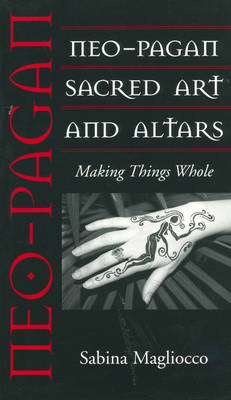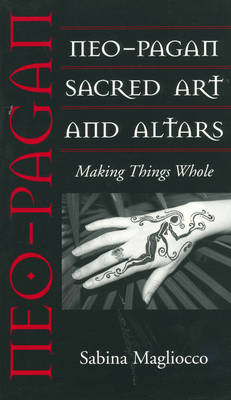
- Retrait gratuit dans votre magasin Club
- 7.000.000 titres dans notre catalogue
- Payer en toute sécurité
- Toujours un magasin près de chez vous
- Retrait gratuit dans votre magasin Club
- 7.000.0000 titres dans notre catalogue
- Payer en toute sécurité
- Toujours un magasin près de chez vous
Description
Fire-cat masks, earth mother icons, henna tattoos, ankhs, and water altars--these objects may sound like the inventory in an ancient druid's sanctuary. But they are part of the sacred reliquary created by contemporary artists and practitioners of Neo-Pagan ritual. Calling themselves "witches" and "pagans" and drawing inspiration from pre-Christian polytheistic worship, the practitioners of Neo-Paganism have often been misunderstood by outsiders. In the uninitiated, their art and iconography have inspired fear. In featuring the works of ten artists, Sabina Magliocco's Neo-Pagan Sacred Art and Altars unlocks the meanings of this religion's creativity and symbolism and makes its sacred nature understandable to non-specialists. A stunning array of color plates and halftones will touch the imagination of insiders and outsiders alike, revealing the imaginative skills of some of the movement's most celebrated artists, as well as amateurs working at home with family and friends. These masks and altars, earrings and necklaces create one of the Neo-Pagan movement's most striking features--its ritual art. Yet this is one of the first books to focus on these spiritual objects rather than on the sociology and psychology of the followers. The odd array of costumes and jewelry, as well as the juxtaposition of neo-primitive and medieval-looking styles, troubles outsiders and contributes to the movement's undeserved reputation for attracting eccentrics. Yet its sacred art is part of one of the most flourishing contemporary traditions in the United States. Sabina Magliocco is an assistant professor of anthropology at California State University (Northridge). Her previous book, The Two Madonnas: The Politics of Festival in a Sardinian Community (1993), won the 1994 Chicago Folklore Prize. She has been published in such periodicals as Journal of American Folklore, Western Folklore, and Fabula.
Spécifications
Parties prenantes
- Auteur(s) :
- Editeur:
Contenu
- Nombre de pages :
- 88
- Langue:
- Anglais
- Collection :
Caractéristiques
- EAN:
- 9781578063918
- Date de parution :
- 28-04-14
- Format:
- Livre broché
- Format numérique:
- Trade paperback (VS)
- Dimensions :
- 137 mm x 205 mm
- Poids :
- 136 g

Les avis
Nous publions uniquement les avis qui respectent les conditions requises. Consultez nos conditions pour les avis.






